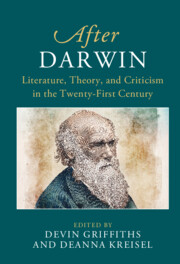Book contents
- After Darwin
- After Series
- After Darwin
- Copyright page
- Contents
- Figures
- Contributors
- Chapter 1 Introduction
- Part I Environments after Darwin
- Part II Differences after Darwin
- Chapter 6 Disability after Darwin
- Chapter 7 Race after Darwin
- Chapter 8 Darwin under Domestication
- Chapter 9 Feminism at War
- Chapter 10 The Survival of the Unfit
- Part III Humanism after Darwin
- References
- Index
Chapter 7 - Race after Darwin
from Part II - Differences after Darwin
Published online by Cambridge University Press: 01 December 2022
- After Darwin
- After Series
- After Darwin
- Copyright page
- Contents
- Figures
- Contributors
- Chapter 1 Introduction
- Part I Environments after Darwin
- Part II Differences after Darwin
- Chapter 6 Disability after Darwin
- Chapter 7 Race after Darwin
- Chapter 8 Darwin under Domestication
- Chapter 9 Feminism at War
- Chapter 10 The Survival of the Unfit
- Part III Humanism after Darwin
- References
- Index
Summary
This chapter traces some of the lines of descent that race has followed since Darwin’s Origin of Species. Far from his work putting an end to the Species Question (whether human races constituted separate and unchanging species), race flourished not only in “social Darwinism” and eugenics, but also in various academic disciplines, law, social policy, and everyday life. The chapter discusses how race served as an organizing concept within natural history and remained such in the emerging sciences of life: in biology and sociology; in critical race theory’s uncritical use of scientific evidence that challenges racial categories; and in the way Darwin’s intervention into “the truth of race” remains central to notions of diaspora, homeland, identity, and the structural racialism of everyday life, even as his work is invoked to naturalize stereotyped racial phenotypes and to support racialized technologies, especially in robotics and applications of artificial intelligence.
Keywords
- Type
- Chapter
- Information
- After DarwinLiterature, Theory, and Criticism in the Twenty-First Century, pp. 83 - 94Publisher: Cambridge University PressPrint publication year: 2022

